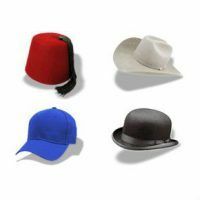
A hat is a headdress consisting of a crown and fields. Tulia is the part of the dress that is put on the surface of the head, and the margins are edged with tulle at the edges. In the classical version, hats are decorated with ribbons, but often also use feathers or other elements of the headdress decor.
The most common material for making hats is felt. However, in the production of some models, thin or hard straw is used. Depending on the material, as well as the shape of the crown and fields, there are several types of hats, each of which belongs to the fashion of a certain time. Today we will try to understand this.
Models of hats of the Middle Ages
Panama
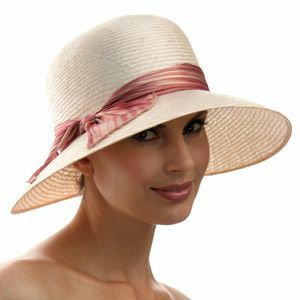
This type of hats was named after the region of the same name. It was in Panama that this model, which was ideally suited for a hot climate, was exported most of all. Currently, Panama is worn in many countries as a summer headdress. The hat, made from a special kind of straw, has a flat top and soft tulle of medium height. Panama fields are not very straight, sometimes slightly bent upward. In our country, Panama is called a thin textile hat for summer holidays.
Sombrero
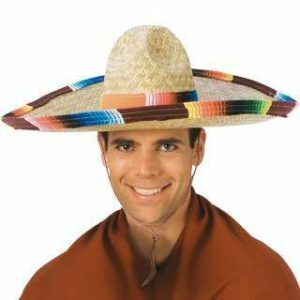
This headpiece is a traditional Mexican hats model with a rigid high crown, often in the form of a truncated cone. The fields of the sombrero are rather wide and straight, and on the sides slightly curved upwards. In modern fashion, the sombrero is present in the collections of many designers.
Wide-brass
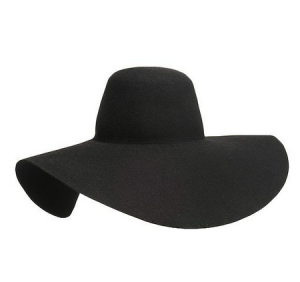
A female model with very wide margins and a rounded crown. The rigidity of the hat, as well as the shape of the fields and the tulle itself, can vary. This model appeared in the Middle Ages in Europe. Currently, it is considered a female beach headdress.
Fezka
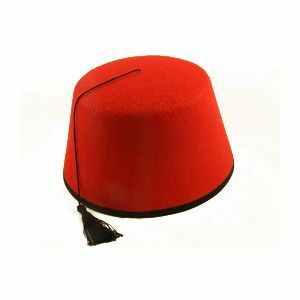
A hat model representing a headpiece in the form of a truncated cone. Tula is tall and stiff, but there are no fields in this model. In the European fashion the fez did not enter, however now also appears in some designer collections.
Current
Like the fez, it is a female headless hat. The hat's hats are flat and stiff. The current has a cylindrical shape of medium height. The most popular was in the early 20th century as the headdress of married ladies.
Cylinder
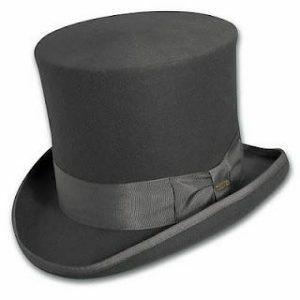
This model appeared in England a little later than all of the above. The most popular was in the 19th century. It is a rigid high crown in the form of a cylinder with the same rigid fields, which slightly bend upward. The cylinder is considered a classic headdress of magicians, and it is worn on royal races in Ascot.
Gaucho
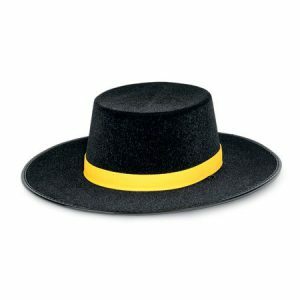
Named after a subcolonial group based in Argentina. It was there that for the first time this type of hat appeared with a rigid cylindrical crown of middle height and narrow wide fields. In the European fashion was seen only towards the end of the 20th century.
Types of hats of the 19th century
Fedor
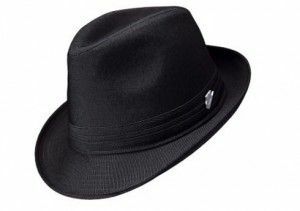
Like most models, this hat has female and male versions. Tulia Fedorah can be soft or hard, has an average height and the shape of a cylinder. Most often wear such a hat, slightly shifting to one side, and on the thong makes three hollows - on top and sides. Soft narrow fields sometimes fold upward. It became fashionable in the beginning of the 20th century and was at its peak up to the 60s.
Bowler
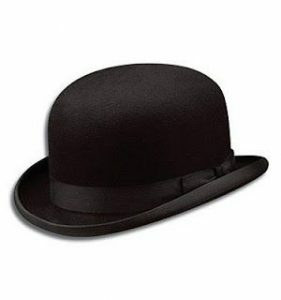
View of a hat with a rounded top and narrow margins bent upward. Tula has the shape of a hemisphere of low height. This model is also called "derby".Homeland of this type of hat is the United Kingdom.
Homburg
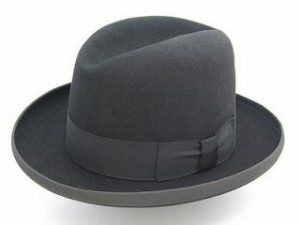
This model of the hat got its name in honor of the manufacturing city - Bad Homburga. This hat is usually decorated with ribbon. A trapezium trapezoid with a crown crowned inwards, the edges of hard fields also slightly bend upward. Previously, the hamburg hat was popular only among the male half of Germany, but by the 20th century it became a mandatory male headdress in Europe.
Trilby
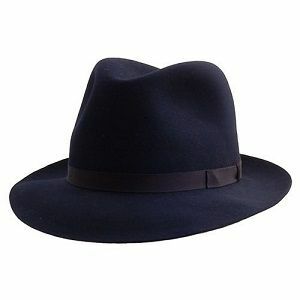
The classic model of a trilby hat is decorated with a ribbon with a buckle or bow on its side. A trapezoid shaped box of medium height has, like the Fedor, three dents. The margins of the hat are not tight, they can be straight or curled upwards.
Kanotier
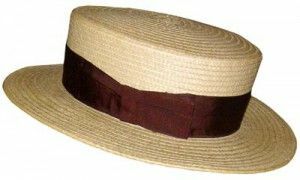
Hat made from straw. It is a straight flat tulle in the form of a cylinder, often decorated with a ribbon. The fields are rigid, also straight. Canoty appeared in the late 19 th century, was originally a sailor's hat. As a female hat on the pedestal of fashion, she was brought out by Coco Chanel. At present, the canoe is considered a symbol of Venice.
Pork-paddy
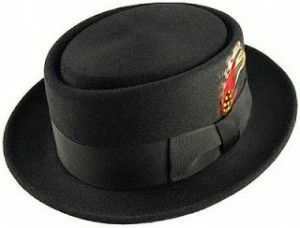
Rigid hat with narrow margins and a low crown, at the edges of a hollow in the form of a protuber that looks like a pie bug. In honor of this, and got its name( literal translation of the name of the headdress 'pork pie' - "pie with pork").The hat of the spanking was popular in the middle of the 20th century. Now she is preferred to wear musicians of the jazz genre.
Cowboy
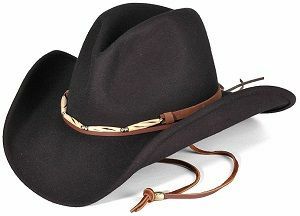
Traditional headwear of farmers in the western territories of America. Trapezoidal shape of the crown with an inwardly concave top. The fields of the hat are wide and hard, they are curved upwards. Now this model of a hat though is included in a collection of some designers, but it is used more often as a tourist souvenir.
Breton
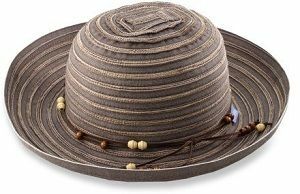
Female model of a hat with a round top and wide margins bent outwards. First appeared in France, but in the fashion of European countries entered already by the 20th century.
Triangle
Wide-brimmed hat with a rounded top. The fields in this model are bent to the tulet, forming three corners. They wore such a hat in the 17th century, and by the end of the 18th century they replaced it with a two-cornered hat - a hat with two horns.
Types of hats of the 20th century
Klosh
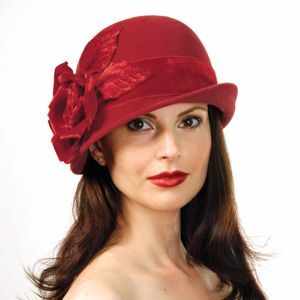
Female hat model with a low rounded crown, tight head. The fields are rather narrow and can be bent either up or down. Such a hat is usually decorated with ribbon or feathers. It was popular at the beginning of the 20th century, and since 2013 has reappeared in many fashion collections.
Slauch
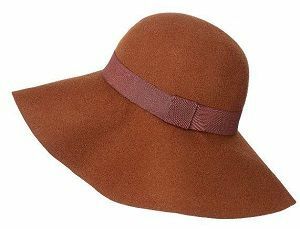
Women's hat is hemispherical with lowered fields. The top of the slouch is rounded, the stool itself is stiff at a small height. This model appeared in the early 20th century and was initially popular among men. In the future, the slouch hat became exclusively a female accessory. Rigid low hat without margins.
.It takes the form of a pill, in honor of which it received its name. Initially appeared as a headdress of players in polo. At the end of the 20th century, the hat became quite popular among women thanks to Jacqueline Kennedy. You can also often see a pill as a bride's headdress.
Recently, eminent designers are increasingly recalling the existence of an accessory, such as a hat. And it's wonderful, because correctly picking up the headgear under the shape of your face, you can successfully highlight the winning aspects of appearance. It's a great incentive to learn more about the varieties of hat models and learn how to choose them.
Cognitive article. Thank you. I like it when ladies wear original headgear. I'm shy in experiments with headdresses, although internally there is a desire to go out not in a standard cap, and eh. .. not enough spirit.

I do not like hats at all and I do not wear them, but it was useful to read about them. After all, there are people who wear them without taking off. I wonder what motivates them?